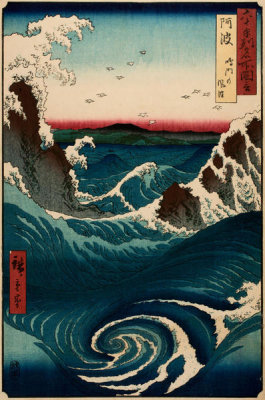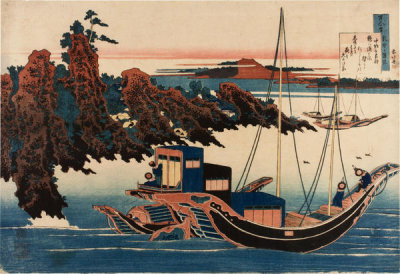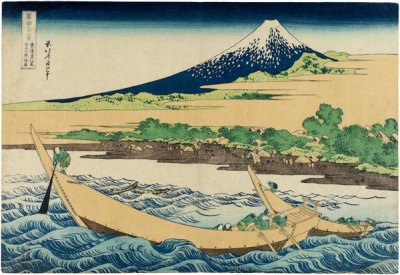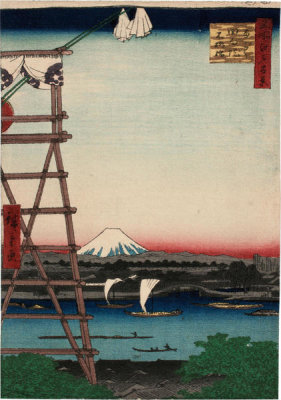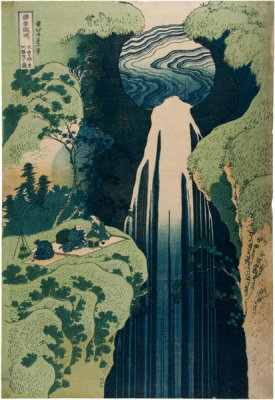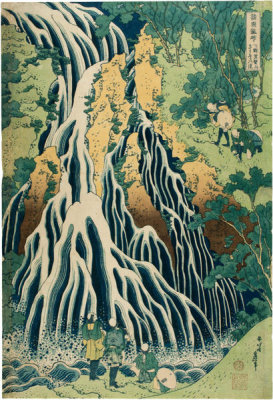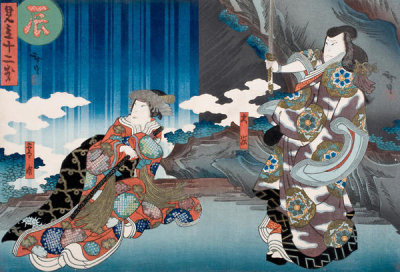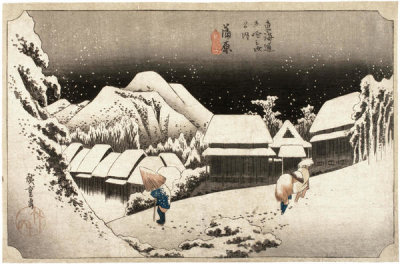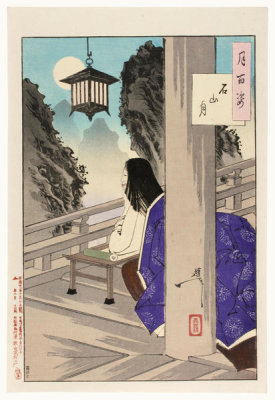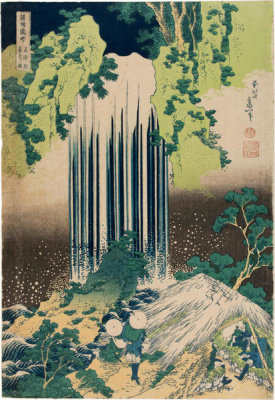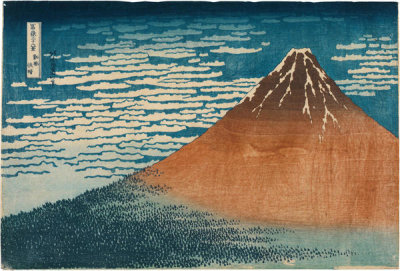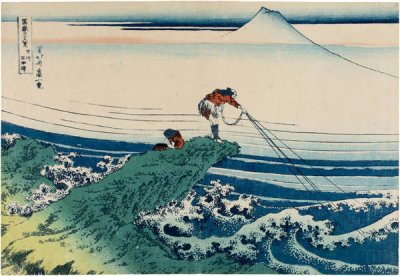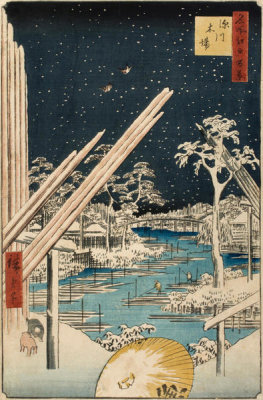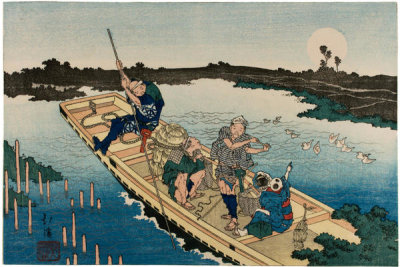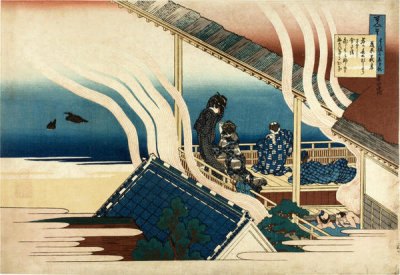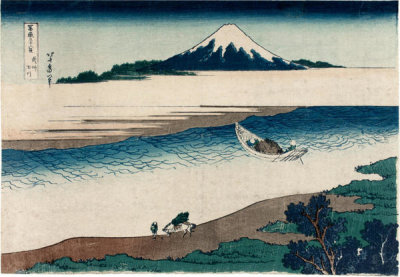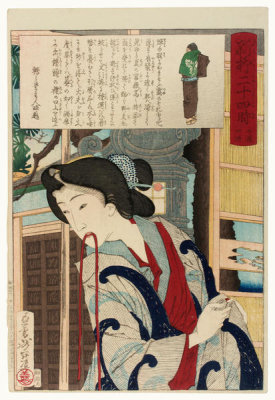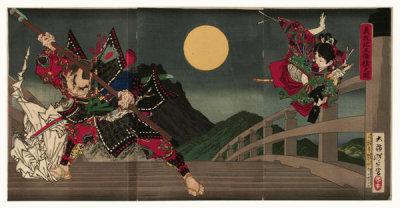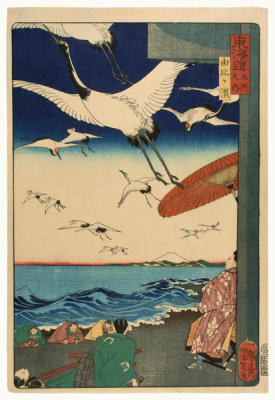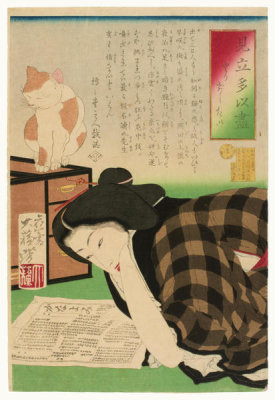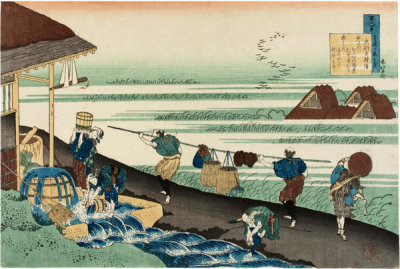Japanese Woodblock Prints
Woodblock prints are made by transferring an image carved on a block of wood onto a sheet of paper. Japanese woodblock printmaking is known for its innovative use of materials. The first and one of the most important steps for the artist is selecting the proper wood. Traditional Japanese printmakers integrate the grains of wood into the design. After the woodblock is selected, the surface is cut away with knives or gouges varying in size to accommodate different thicknesses of lines. Next, ink is applied to the surface with brushes and then a piece of paper is placed over the colored block. The back of the paper is rubbed with a baren, a disk-shaped pad. The areas of the woodblock that are cut away will remain blank on the paper.
Artists, like Hokusai, enjoy using many colors in their prints. This requires a method of multiple block printing in which a separate woodblock is carved for each color used. Each block has register guides called kentō cut into it. The guides help the artists align the blocks so that each color is printed clearly without spoiling other parts of the design. The paper made for woodblock printing must be strong and absorbent to stand up to many rubbings with a baren. Japanese printmakers favor paper made from mulberry trees.

